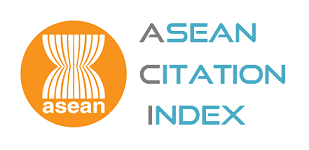DEVELOPMENT OF BLENDED LEARNING MANAGEMENT PROCESS WITH PHONICS TEACHING METHOD TO ENHANCE ENGLISH PRONUNCIATION SKILLS FOR PRATHOMSUKSA 3 STUDENTS
Keywords:
blended learning process, Phonics teaching method, English reading and pronunciation skillsAbstract
This research aimed 1) to examine the elements of the blended learning management process and the phonics teaching method, 2) to develop and evaluate the efficiency of the blended learning management process with the phonics teaching method, and 3) to evaluate the effectiveness of the developed learning management process for enhancing English pronunciation skills of Prathomsuksa 3 students. The research and development approach (R&D) was employed. The sample, obtained through cluster sampling, consisted of 35 Prathomsuksa 3 students in the 2023 semester at Ban Pak Pa Ya School under Primary Educational Service Area Office 1 Nakhon Si Thammarat. Data collection tools included a document analysis form, an assessment form of English phonics pronunciation skills, and a satisfaction assessment form. The data were analyzed by content analysis, percentage, mean, standard deviation, and t–test for Dependent Samples.
The research results showed that:
1. The blended learning management process comprised five components: 1) online learning, 2) offline learning, 3) student participation, 4)evaluation, and 5) media and equipment. The phonics teaching method involved four steps: Step 1 learning consonant and vowel sounds, Step 2 practicing oral blending of sounds to form words, Step 3 segmenting words into individual sounds and learning common exception words, along with their meanings, and Step 4 focusing on pronunciation and understanding the meaning of words.
2. The blended learning process integrated with the phonics teaching method consisted of five steps: Step 1: knowledge reviews. Step 2: learning consonants and vowel sounds. Step 3: Practice blending sounds. Step 4: segmenting words into individual sounds. Step 5: measurement and evaluation. The developed learning process achieved the E1/E2 efficiency of 77.71/75.23.
3. The effectiveness after the intervention revealed that:
3.1 The students’ learning achievement was significantly higher than before the intervention with a statistical significance level of .05.
3.2 The students’ English pronunciation after the intervention was significantly higher than that before the intervention at the .05 level of significance.
3.3 Students’ satisfaction with the developed learning process was overall at a high level.
References
กุณฑิกา พัชรชานนท์ และบัลลังก์ โรหิตเสถียร. (2561). ปลอด นร.อ่านไม่ออกเขียนไม่ได้. เข้าถึงได้จาก http://www.moe.go.th/moe/th/news/detail.php. 1 พฤษภาคม 2565.
กุลธิดา ทุ่งนาใน. (2564). การเรียนรู้แบบผสมผสาน Blended Learning ในวิถี New Normal Blended Learning in a New Normal. ครุศาสตร์สาร, 15(1), 29–43.
จิราภรณ์ เสืออินทร์. (2559). การพัฒนาทักษะความสามารถด้านการอ่านภาษาอังกฤษโดยการสอนแบบโฟนิกส์ นักเรียนชั้นประถมศึกษาปีที่ 2 โรงเรียนบุญคุ้มราษฎร์บำรุง. วิทยานิพนธ์ ศษ.ม. กรุงเทพฯ: มหาวิทยาลัยธรุกิจบัณฑิตย์.
จิรารัตน์ ประยูรวงษ์. (2562). DIGITAL LEARNING การเรียนรู้ภาษาอังกฤษบนโลกดิจิทัลในศตวรรษที่ 21. วารสารบัณฑิตศึกษา มหาวิทยาลัยราชภัฏวไลยอลงกรณ์ ในพระบรมราชูปถัมภ์, 13(1), 210–223.
เจษฎา วารี. (2557). ทักษะการออกเสียงภาษาอังกฤษของนักเรียนระดับชั้นประถมศึกษาปีที่ 3 โรงเรียนเปี่ยมสุวรรณวิทยา ที่เรียนรู้แบบร่วมมือและแบบเน้นปฏิบัติ. วิทยานิพนธ์ ค.ม. กรุงเทพฯ: มหาวิทยาลัยราชภัฏธนบุรี.
ฉวีวรรณ วัฒนานุกิจ. (2565). การพัฒนาชุดิกิจกรรมการเรียนรู้ด้วยการสอนแบบโฟนิกส์ เพื่อส่งเสริมการอ่านออกเสียง ภาษาอังกฤษหน่วยการเรียนรู้ เรื่อง สระเสียงสั้น สำหรับนักเรียนชั้นประถมศึกษาปีที่ 1. วิทยานิพนธ์ ค.ม. จันทบุรี: มหาวิทยาลัยราชภัฏรำไพพรรณ.
ณัฐนันท์ นิเวศน์วรการ. (2018). การใช้การสอนแบบโฟนิกส์เพื่อส่งเสริมความสามารถในการออกเสียงความรู้คำศัพท์และการอ่านภาษาอังกฤษของนักเรียนชั้นมัธยมศึกษาปีที่ 2. วารสารวิจัยทางการศึกษา คณะศึกษาศาสตร์ มหาวิทยาลัยศรีนครินทรวิโรฒ, 13(1), 69–80.
ณัฐพร สุขเกษม. (2559). การใช้การสอดแทรกโฟนิกส์ร่วมกับการใช้สื่อสภาพจริงเพื่อส่งเสริมการอ่านออกเสียงความรู้คำศัพท์และความสามารถในการอ่านภาษาอังกฤษของนักเรียนระดับชั้นมัธยมศึกษาปีที่ 4. วารสารพิฆเนศวร์สาร มหาวิทยาลัยราชภัฏเชียงใหม่, 12(2), 15–27.
ณัฐพล สุริยมณฑล และคณะ. (2561). การสอนแบบโฟนิกส์เพื่อส่งเสริมการออกเสียงและความรู้คำศัพท์ภาษาอังกฤษของนักเรียนชั้นประถมศึกษาปีที่ 1. วารสารมนุษยศาสตร์และสังคมศาสตร์ มหาวิทยาลัยนครพนม, 8(2), 117–124.
ทิศนา แขมมณี. (2558). ศาสตร์การสอน : องค์ความรู้เพื่อการจัดการกระบวนการเรียนรู้ที่มีประสิทธิภาพ. (พิมพ์ครั้งที่ 6). กรุงเทพฯ: สำนักพิมพ์แห่งจุฬาลงกรณ์มหาวิทยาลัย.
ทัศนีย์ ธราพร. (2564). การประยุกต์ใช้การเรียนรู้แบบผสมผสาน (Blended Learning Approach)ในรายวิชาภาษาอังกฤษเพื่ออาชีพเพื่อส่งเสริมความสามารถในการสื่อสารภาษาอังกฤษของผู้เรียน. วารสารสุโขทัยธรรมาธิราช, 34(1), 71–87.
นฤมล สุปินโน. (2557). ผลการใช้วิธีสอนแบบโฟนกส์เพื่อพัฒนาทักษะการอ่านออกเสียงภาษาอังกฤษและเจตคติต่อการอ่านแบบโฟนิกส์ของนักเรียนชั้นประถมศึกษาปีที่ 2. วิทยานิพนธ์ ศษ.ม. นนทบุรี: มหาวิทยาลัยสุโขทัยธรรมาธิราช.
พิจิตรา ธงพานิช. (2560). วิชาการออกแบบและการจัดการเรียนรู้ในชั้นเรียน. (พิมพ์ครั้งที่ 3). นครปฐม: โรงพิมพ์มหาวิทยาลัยศิลปากร วิทยาเขตพระราชวังสนามจันทร์.
มาริสา พันเปรม. (2561). การประเมินสื่อการสอนโฟนิกส์สำหรับนักเรียนชั้นประถมศึกษาปีที่ 1–3 โรงเรียนในสังกัดกรุงเทพมหานคร สำนักงานเขตหนองแขม. การค้นคว้าอิสระ ศษ.ม. กรุงเทพฯ: มหาวิทยาลัยศิลปากร
สำนักงานคณะกรรมการการศึกษาขั้นพื้นฐาน. (2564). สพป.กาญจนบุรี เขต 4 อบรมครูภาษาอังกฤษใช้สื่อเกม และเพลง. เข้าถึงได้จาก https://www.obec.go.th/archives/404263. 25 พฤษภาคม 2566.
สำนักงานคณะกรรมการการศึกษาขั้นพื้นฐาน. (2560). ข่าววงการศึกษา : นโยบายการศึกษา. กรุงเทพฯ: บริษัท จามจุรีโปรดักส์ จำกัด.
สำนักงานเลขาธิการสภาการศึกษา. (2560). แผนการศึกษาแห่งชาติ พ.ศ. 2560–2579. กรุงเทพฯ: พริกหวานกราฟฟิค.
Carman, J. M. (2006). Blended Learning Design: Five Key Ingredients. Retrieved from http://www.agilantlearning.com/ pdf/Blended%20Learning%20Design.pdf. January 20th, 2023.
Grant. (2014). Phonics Making a Positive Impact on Literacy. Retrieved from https://www.languagemagazine.com/phonics–making–a–positive–impact–on–literacy/. January 3rd, 2023.
Festallor Education School. (2020). ความสำคัญของภาษาอังกฤษในด้านต่าง ๆ. Retrieved from https://www.festallor– edu.com/post/why–english–is–important. February 7th, 2023.
Januzzi, C. (1997). Key Concepts in Literacy: Phonics vs. Whole Language. Retrieved from http://www2.aasa.ac.jp/~dcdzcus–LAC97–phonics.htm. January 25th, 2023.
Joyce, B., Weil, M., & Calhoun, E. (2004). Models of teaching. (7th ed.). Boston: Pearson Education.
Macmillan. (2008). Jolly Phonics and the research. Retrieved from https://www.jollylearning.co.uk. February 11th, 2023.
Matichon. (2018). ผลประเมิน PISA 2018 พบคะแนนเด็กไทยการอ่านลดอย่างต่อเนื่อง คณิต–วิทย์ เพิ่มขึ้นเล็กน้อย. Retrieved from https://www.matichon.co.th/education/news_1783421. May 15th, 2023.
Phonics, J. (2021). Jolly Phonics. Retrieved from https://www.jollylearning.co.uk/jolly–phonics/. February 14th, 2023.
Thu My, N., & Minh H, T. (2020). Information Technology Freshmen' Attitudes towards English Language Learning with Blended Learning Course at FPT Polytechnic College. International Journal of Scientific and Research Publications, 10(8), 665–670.
Wiggins, Grant. (1990). The case for Authentic Assessment. Retrieved from https://eric.ed.gov/?id=ed328611. January 25th, 2023.
Downloads
Published
How to Cite
Issue
Section
License
Copyright (c) 2024 Journal of Graduate School Sakon Nakhon Rajabhat University

This work is licensed under a Creative Commons Attribution-NonCommercial-NoDerivatives 4.0 International License.
บทความทุกบทความที่ตีพิมพ์ในวารสารบัณฑิตศึกษา มหาวิทยาลัยราชภัฏสกลนคร ถือว่าเป็นลิขสิทธิ์ของบัณฑิตวิทยาลัย มหาวิทยาลัยราชภัฏสกลนคร










